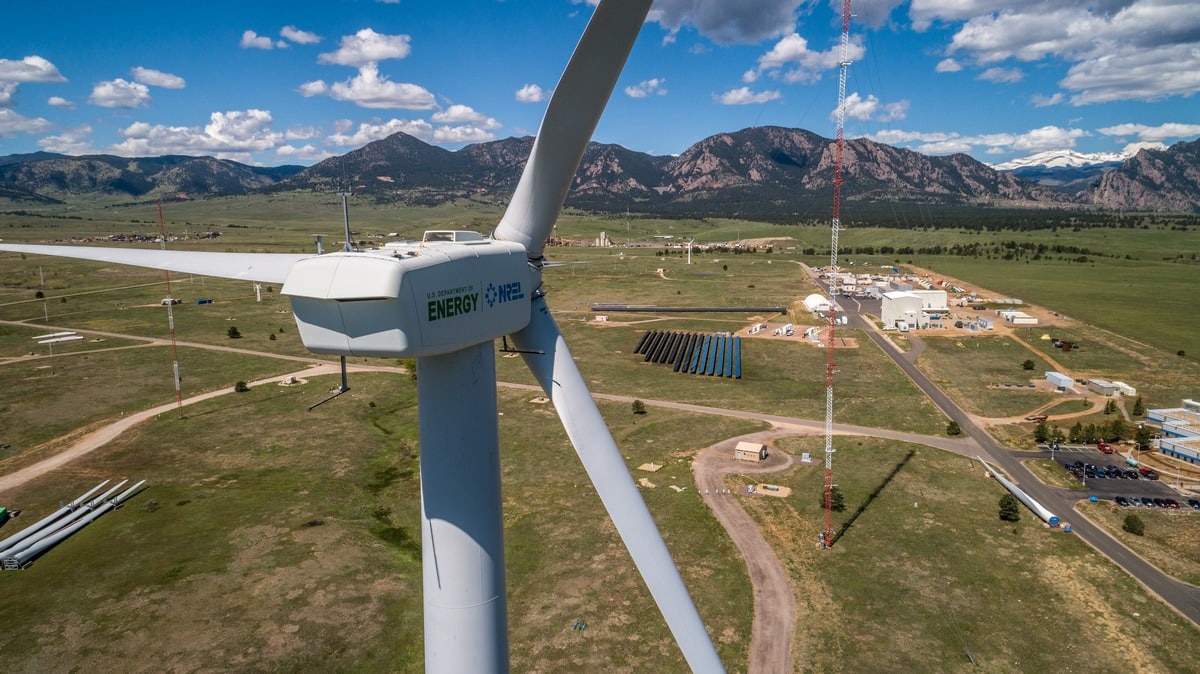
This story was originally published in the Toronto Star.
By Tyler Hamilton
When solar entrepreneur Jeremy Leggett bumped into Suncor Energy boss Steve Williams at the World Economic Forum in 2014, odds were high that tempers would flare.
The two men were among about 40 dinner guests – a mix of CEOs, pension fund managers, economists and government leaders. They had gathered in Davos, Switzerland, to talk about “short-termism” in the financial and corporate worlds and how it undermines efforts to tackle climate change.
At one point during the dinner, Leggett recalls in his book The Winning of the Carbon War, Williams mentioned the difficulty he had in pushing through a 50-year investment plan for the oil sands.
Leggett, who is also non-executive chairman of London-based financial think tank Carbon Tracker, asked Williams after the dinner if he was concerned the investment would become stranded; that within five decades the world would no longer need what Canada’s largest oil company had to offer.
 “Clean energy can’t do the job oil does… Clean energy can’t be economic,” Williams snapped. To which Leggett replied: “But we are already in the process of doing that… Doesn’t that make you worry just a little about your 50-year plan?”
“Clean energy can’t do the job oil does… Clean energy can’t be economic,” Williams snapped. To which Leggett replied: “But we are already in the process of doing that… Doesn’t that make you worry just a little about your 50-year plan?”
In Leggett’s book, the exchange ends there. But it continued – and got heated, to the point where a red-in-the-face and clearly insulted Williams stormed off in anger.
THAT WAS THEN…
Back then Williams had less reason to worry. Brent crude was priced at around $107 (U.S.) a barrel and meaningful political action on climate change, both in Canada and internationally, was largely absent.
Two years later the fossil fuel industry is under siege. Brent prices have plunged by two-thirds to below $40 (U.S.) a barrel, and the International Energy Agency says a recovery shouldn’t be expected anytime soon.
At the same time, Alberta now has an ambitious climate plan that includes a carbon tax and hard cap on oil sands emissions. And just last week, 196 countries approved a binding global climate deal in Paris.
The Paris agreement seeks no less than a peaking of greenhouse-gas emissions “as soon as possible” and a de-carbonized global economy within the second half of the century. It is through the lens of this new, irreversible reality that Canada’s oil sands industry must move forward in competition with every other oil-producing nation.
“Most people in the industry have been to some extent surprised at how quickly change has happened over the past 12 months,” said Chad Park, executive director of non-profit sustainability consultancy The Natural Step Canada.
Park is heading up an initiative called the Energy Futures Lab, which has assembled a group of experts from academia, industry, government and civil society to come up with a low-carbon transition plan for Alberta.
Current CO2 emissions from oil sands production sit at around 70 megatonnes, twice as much compared to 10 years ago. Alberta’s new climate plan calls for a ceiling of 100 megatonnes.
Two years ago, when the oil sands were riding high on above-$100 oil, the industry would have hit that emissions ceiling by 2020, according to projections from Environment Canada. But with sub-$40 oil, development has slowed substantially. At today’s rates of production based on current technology, the industry could delay reaching its emissions cap to 2030, possibly later.
“No new projects are being built,” said economist Dave Sawyer, CEO of Ottawa- based EnviroEconomics. “Right away the market has taken care of all that new growth.”
It creates space for Alberta’s economy to diversify, which has never been more crucial. “We can argue about the pace and the strategy, but the idea of transition is now part of government policy,” said Park. “Some are getting the message. Some aren’t.”
Suncor, under Williams’ leadership, seems to get it more than others. He was one of four oil sands CEOs who backed Alberta Premier Rachel Notley’s climate plan and, rather than dismissing the events in Paris, he flew there to listen and learn.
These days, he says, Suncor’s goal is to be “the last man standing,” implying that many in his industry will fall. He says he’ll tackle low oil prices and an emissions cap in Alberta by boosting operational efficiencies and using new technologies to reduce costs and emit less GHGs per barrel of oil.
Dan Zilnik, president of Oil & Gas Sustainability, a consultancy in Calgary, said limits on global emissions will, over time, keep more fossil fuels in the ground. But not all fossil fuels, oil producing regions and individual projects will be threatened equally.
He equates it to a game of musical chairs. “For Alberta and for the companies invested in the oil sands, the challenge is to position some portion of their reserves to be consistent with a carbon constrained world, either by being first to find a seat, or by being faster – lower-carbon – that the competition,” said Zilnik.
But eventually, by the end of this century, all seats will be taken away and the music will stop for fossil fuels, assuming the political will behind the Paris agreement and the advance of clean, renewable technologies prove lasting.
That means being better and more efficient at producing oil won’t be enough as we approach the second half of this century. Companies, such as Suncor, will need to ask themselves what they want to be when they grow up in the low-carbon economy.
So how might it all play out? Expect the following actions from oil companies over the coming years…
PLAN & DISCLOSE
 Bank of England governor Mark Carney, in his role as chair of the international Financial Stability Board, announced in Paris that he was creating a climate disclosure task force to be led by former New York City mayor Michael Bloomberg. The task force will encourage companies to disclose the risks that climate change pose to assets and operations, and will create standardized guidelines for how those risks should be publicly disclosed.
Bank of England governor Mark Carney, in his role as chair of the international Financial Stability Board, announced in Paris that he was creating a climate disclosure task force to be led by former New York City mayor Michael Bloomberg. The task force will encourage companies to disclose the risks that climate change pose to assets and operations, and will create standardized guidelines for how those risks should be publicly disclosed.
Guidelines will be voluntary, though there will be immense pressure on companies to embrace them. Over time, they could become mandatory through national securities regulators.
Carney said investors deserve to know if climate change and responses to it will affect their investments. Does a company have a strategy to reduce its carbon footprint consistent with each country’s commitment under the Paris agreement?
“It’s a reasonable question to ask,” said Carney, who has stressed previously, “the more we invest with foresight, the less we will regret in hindsight.”
With such disclosure, more capital will flow to companies with a transition plan and projects that carry the least climate risk.
LOWER-CARBON BARRELS
Days after the Paris summit, the CEO of global engineering giant WorleyParsons sent a memo to employees about the “significant business change” that would soon hit the company’s customers, which in the oil sands include Nexen, Devon, Suncor, Statoil, Total and Shell. “These customers will need to adapt to remain relevant,” the memo said. A long-time WorleyParsons employee told the Star: “I’ve never heard this tone before from the brass.”
Making existing operations more energy-efficient will lower costs and per-barrel emissions. Expect more oil sands projects to capture and reuse waste heat and embrace alternative processes that consume less energy. What energy that is used will increasingly come from clean electricity such as hydropower, instead of natural gas. There’s also potential for capturing CO2 emissions and recycling them into high-value industrial chemicals, though purchasing offsets through international carbon markets will be the least-cost option.
“The pace at which the pieces of the carbon pie crumble is going to be based on advancements in low-emission technologies,” said Chad Park of Energy Futures Lab.
UNDERMINE COAL
The Paris agreement, at minimum, aims to keep the rise in average global temperatures “well below” 2 degrees C compared to pre-industrial levels. To stay below that threshold, Citigroup estimates that one-third of oil reserves, half of natural gas reserves, and 80 per cent of coal reserves need to stay in the ground.
Burning coal emits the highest amount of CO2 per unit of energy it delivers, so coal is first on the firing line when it comes to emissions regulation and carbon pricing. This explains why most big oil companies support a carbon tax, which will hurt coal much more than oil. The reality is that every tonne of coal that gets left in the ground leaves more of the global carbon budget to oil. From hereon in, oil majors will be jockeying for a bigger piece of that fixed budget to extend the life of their traditional businesses for as long as possible.
We’ve already seen that in Alberta. Remember, it was four CEOs from the oil industry who happily stood on stage with Premier Rachel Notley when she announced a climate plan that includes phasing out all coal-fired power generation.
FILL UP ON NAT GAS
When burned, natural gas emits about 25 per cent less CO2 than oil and 50 per cent less than coal, so it makes sense for big petroleum companies to lean more heavily on this resource. It helps big energy companies lower their carbon footprints and capture an even larger share of a shrinking global carbon budget. It also makes use of existing expertise in drilling, hydraulic fracturing, and pipeline transmission.
This is why oil giants like ExxonMobil are investing more these days in natural gas, demand for which is expected to grow as electric utilities in Canada, the United States and Europe switch from coal to gas-fired power generation. Within that context, Shell’s recent $70-billion takeover of BG Group, the world’s largest liquefied natural gas supplier, makes a whole lot of sense.
Relying more on natural gas, however, is not a long-term climate solution. What it does do is buy the big oil companies some time. Natural gas will also be needed over the short and medium term to manage the variable nature of wind and solar energy systems, at least until large-scale energy storage becomes more economical.
BUY & SELL
Heading into 2016, the industry is certain to consolidate. Independent policy think tank Chatham House, in a report released in July, says a period of adjustment is expected in the transition to a low-carbon economy in which financially strong companies acquire strong assets currently belonging to weaker companies. “High-cost and high-risk projects will be abandoned or deferred,” it says. “Companies whose existence relies on such projects will be taken over or broken up, and countries that depend on them for future development will have to revise their strategies.”
To a certain extent, low oil prices have already sparked some merger and acquisition activity. Suncor’s hostile bid to acquire Canadian Oil Sands is an example. Deal making is expected to heat up as deep-pocketed players seek lower-carbon assets that keep them in the game longer.
REDIRECT CASH FLOW
After Paris, it’s widely believed that the petroleum industry is entering an “ex growth” phase, meaning demand for oil will level off and eventually begin to decline as national emissions regulations tighten and clean energy alternatives become more affordable.
In this environment more investors will be asking: Why spend billions of dollars exploring for oil in the Arctic that likely won’t be needed? The same question will be posed to any company proposing to break ground on a new oil sands project.
“Now, it will be all about running sunk assets into the ground,” said Dave Sawyer of EnviroEconomics. For existing oil sands projects, “they have all this built capital already producing significant amounts of oil, and they can pretty much sell it at any price.”
Risky, high-cost exploration plans will be avoided, leading to reduced capital spending. Cash flows will be returned to shareholders through dividend increases or share buybacks that prop up stock prices. Alternatively, if a company is determined to stay relevant in a low-carbon world, those cash flows can be used to fund aggressive diversification.
DIVERSIFY OR DIE
If companies choose to fight for a lasting role in the low-carbon economy, they will need to start investing more of their cash flows into non-fossil alternatives. “Many companies are asking themselves, are we a pure play upstream oil and gas company, or do we want to be something bigger and broader than that?” said consultant Dan Zilnik of Oil & Gas Sustainability.
Jumping into renewables is not a slam dunk. The expertise that oil companies have is with massive, highly centralized multibillion-dollar projects with decades-long time horizons. Most renewable power projects, by comparison, run in the hundreds of millions of dollars and are built in a matter of years, not decades.
They also involve the movement of electrons over wires, not molecules through pipelines. Solar development, for example, couldn’t be more different than oil development, which is grounded in geology and mining. It’s like asking an NFL football player to turn tennis pro.
Many already dabble in wind and solar. “Whether or not they are thinking about doing more, we need to recognize that oil and gas companies are already amongst the biggest players in the renewables game,” said Zilnik, pointing to Suncor and Enbridge as domestic leaders.
But holding and bankrolling a renewable asset and letting it operate independently is much easier than transforming core competencies, which is a rare feat for an incumbent with magnetic attraction to the status quo.
An oil company’s drilling and engineering expertise would be better directed to geothermal power development, while refinery and pipelines operations could transition to biofuels, hydrogen or synthetic oils made from recycled CO2. “You could see Suncor also turning its Petro-Canada gas stations into EV charging stations,” said Dave Sawyer of EnviroEconomics.
ELECTRIC CAR WILD CARD
How quickly the world moves to electrify transportation may, in fact, be the biggest determinant of how fast global demand for oil falls.
In a post-Paris economy, that transition will need to accelerate, said Fatih Birol, executive director of the International Energy Agency (IEA). “The IEA has shown that if global warming is to be limited to 2 degrees, at least a fifth of all vehicles on roads by 2030 should be electric.”
The bad news for the oil industry is that batteries costs for EVs continue to fall. The U.S. Department of Energy estimates such costs have dropped by more than 60 per cent since 2009. Research indicates that energy storage is expected to follow the same growth and cost trend as solar power technologies.
General Motors, for example, surprised many in October when it said the battery system in its new Chevy Bolt all-electric car, which hits dealerships this year, costs around $145 per kilowatt-hour.
That’s a huge breakthrough, considering average costs were thought to be between $300 and $400. Citigroup, UBS and consultancy McKinsey predicted the $200 milestone would be hit sometime between 2017 and 2020, so GM’s revelation is eye-opening. Consider also that Citigroup has called $230 the point at which electric cars begin to pose a serious threat to conventional gasoline-fuelled vehicles.
John Mitchell, an associate research fellow with policy think tank Chatham House, said mass production of a low-cost battery capable of carrying a vehicle hundreds of kilometres is the biggest threat to oil.
“That will change the transport market profoundly,” he said.
We may not be there yet, but we’re getting pretty damn close.
This article is part of a series produced in partnership by the Toronto Star and Tides Canada to address a range of pressing climate issues in Canada leading up to the United Nations Climate Change Conference in Paris, December 2015. Tides Canada is supporting this partnership to increase public awareness and dialogue around the impacts of climate change on Canada’s economy and communities. The Toronto Star has full editorial control and responsibility to ensure stories are rigorously edited in order to meet its editorial standards.
SOURCE: CLEAN | BREAK – Read entire story here.







